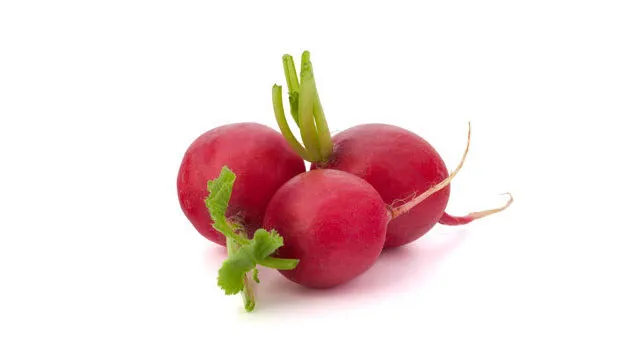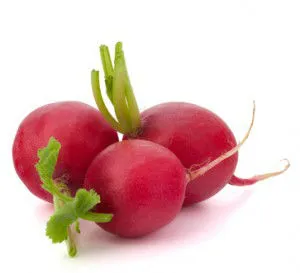
- Share on Facebook252
- Share on Pinterest
- Share on Twitter
Often pushed aside for the main stars of a salad, the underrated radish is actually a powerhouse of nutrition. As a member of the cruciferous vegetable family, the radish is a close cousin of veggie superstars broccoli and kale but boasts a long list of nutritional benefits unique to this red root.
A detoxifying agent. In both the ancient arts of Eastern and Ayurvedic healing, the radish is touted as a notable detoxifier capable of breaking down and eliminating potential disease-causing invaders.
Radishes contain important enzymes and help regulate the production of bile and bilirubin. They are especially useful in detoxifying the liver and gallbladder by eliminating excess bilirubin. And as a natural diuretic, radishes aid in flushing the buildup of toxins in the kidneys which if left unchecked can lead to excess strain or infection.
Sleep Aid: Radishes contain sedative properties that have been kown since ancient times. Both Greeks and Romans used radishes to promote sleep. Try a glass of radish, carrot and ginger juice for a night snack that will help your body wind down and relax.
Fight respiratory infections. Radishes are very high in Vitamin C and other important nutrients that help ward off colds and flu bugs. They also battle the symptoms of these nasty infections as their cooling and anti-inflammatory properties help lower fevers and their natural decongestant capabilities help rid the sinuses and respiratory tract of excess mucus. Radishes also act as a natural disinfectant so it doesn’t hurt to add a few to your salad during the height of cold and flu season.
Provide cancer protection. Like other members of the cruciferous vegetable family, radishes contain glucosinolates. These are sulfur-containing compounds that help protect cells from cancer-causing genetic mutations. Unique to the radish members of this family are their anthocyanins. These potent flavonoids not only provide the radish with its red hue, but also are anti-inflammatory in nature which aids in cancer prevention as well as protection against other illnesses.
A diet aid. Radishes are very low in calories (about 20 calories in a cup) but still pack a mighty nutritional punch. Their high water content keeps you hydrated and less likely to mistake dehydration for hunger. They are also a good source of fiber, meaning they both aid in digestion and help keep you fuller longer as compared to higher-calorie processed carbohydrate snack options that cause spikes and dips in blood sugar.
 Radishes are often found sliced on top of salads but there are plenty of ways to add them to your diet if you aren’t afraid to get a little creative.
Radishes are often found sliced on top of salads but there are plenty of ways to add them to your diet if you aren’t afraid to get a little creative.
- Slice them into thick slices and serve with veggie dip or hummus.
- Steam or boil to soften them and sprinkle a hint of salt and pepper or garlic.
- Incorporate pureed radishes into mashed potatoes or cauliflower to boost nutrient levels.
- Dice raw radishes and incorporate them into salsas, dips, salads and slaws.
- Thinly slice them and layer on sandwiches or burgers for an added crunch.
- Add them to your fresh juice mixes
-The Alternative Daily
Sources:
http://www.organicfacts.net/health-benefits/vegetable/health-benefits-of-radish.html
http://www.whfoods.com/genpage.php?tname=btnews&dbid=126
- Share on Facebook252
- Share on Pinterest
- Share on Twitter

